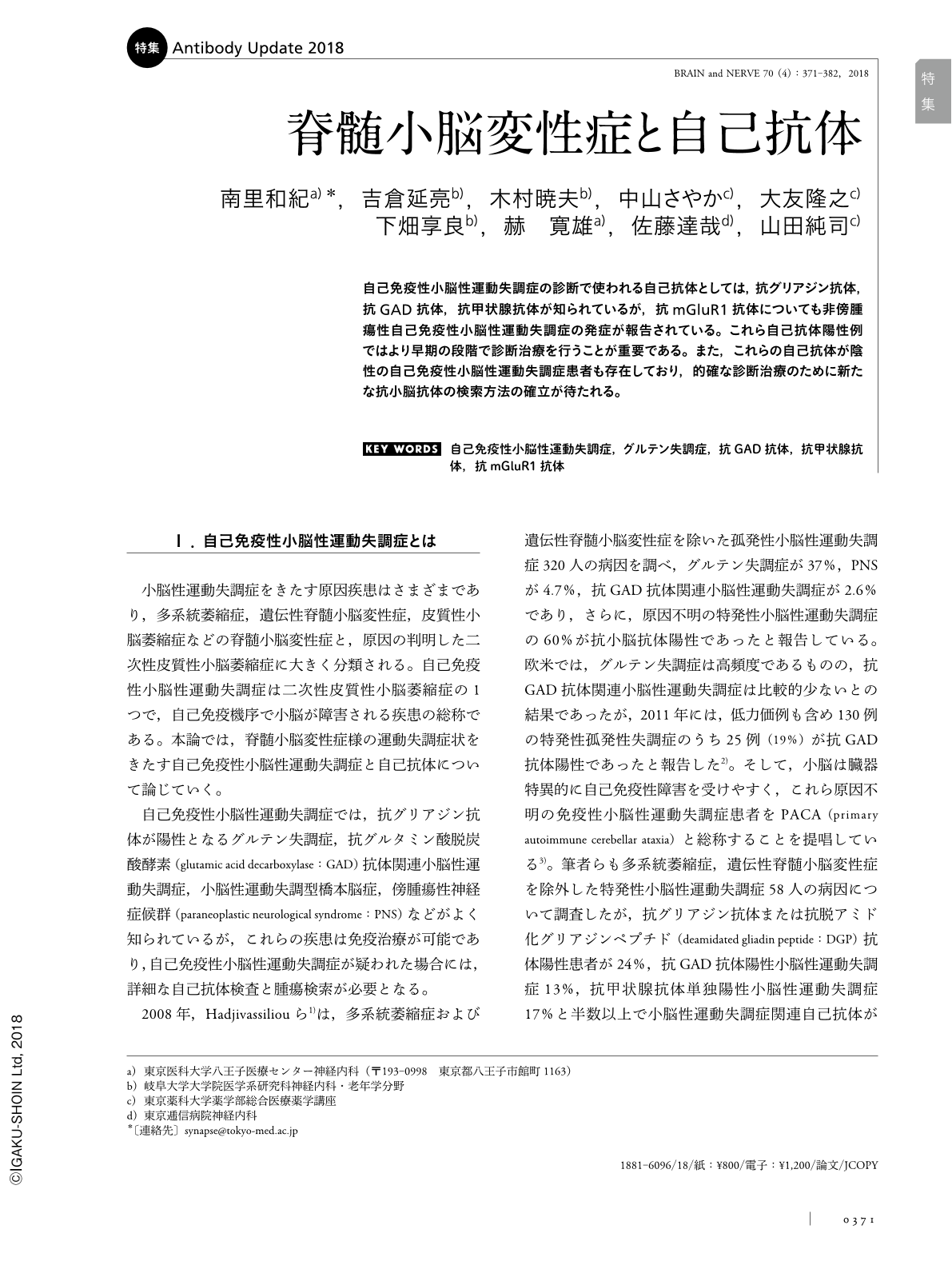Japanese
English
- 有料閲覧
- Abstract 文献概要
- 1ページ目 Look Inside
- 参考文献 Reference
自己免疫性小脳性運動失調症の診断で使われる自己抗体としては,抗グリアジン抗体,抗GAD抗体,抗甲状腺抗体が知られているが,抗mGluR1抗体についても非傍腫瘍性自己免疫性小脳性運動失調症の発症が報告されている。これら自己抗体陽性例ではより早期の段階で診断治療を行うことが重要である。また,これらの自己抗体が陰性の自己免疫性小脳性運動失調症患者も存在しており,的確な診断治療のために新たな抗小脳抗体の検索方法の確立が待たれる。
Abstract
The cerebellum is one of the main targets in the central nervous system for autoimmunity. Immune-mediated cerebellar ataxias include gluten ataxia, GAD antibody-associated cerebellar ataxia, Hashimoto's encephalopathy, and paraneoplastic cerebellar degeneration. Autoimmune cerebellar ataxia may be of either insidious or subacute onset, and vertigo or transient neurological symptoms occur in some patients before the onset of the disease, in contrast to spinocerebellar degeneration. If autoimmune cerebellar ataxia is suspected, early diagnosis and introduction of treatment are very important. For diagnosis, testing for gliadin antibody, TG6 antibody, GAD antibody, thyroid antibody, and anti-neuronal antibodies, including mGluR1, is useful. Magnetic resonance imaging voxel-based morphometry is also useful because it can detect cortical cerebellar atrophy of autoimmune cerebellar ataxia, different from spinocerebellar ataxia. As for treatment, it is important to remove autoimmune triggering factors (e.g.,dietary gluten or neoplasm). When the ataxia symptoms are causing hindrances in the daily life, it is worth considering immunotherapy including IVIg, steroid therapy and so on.

Copyright © 2018, Igaku-Shoin Ltd. All rights reserved.


